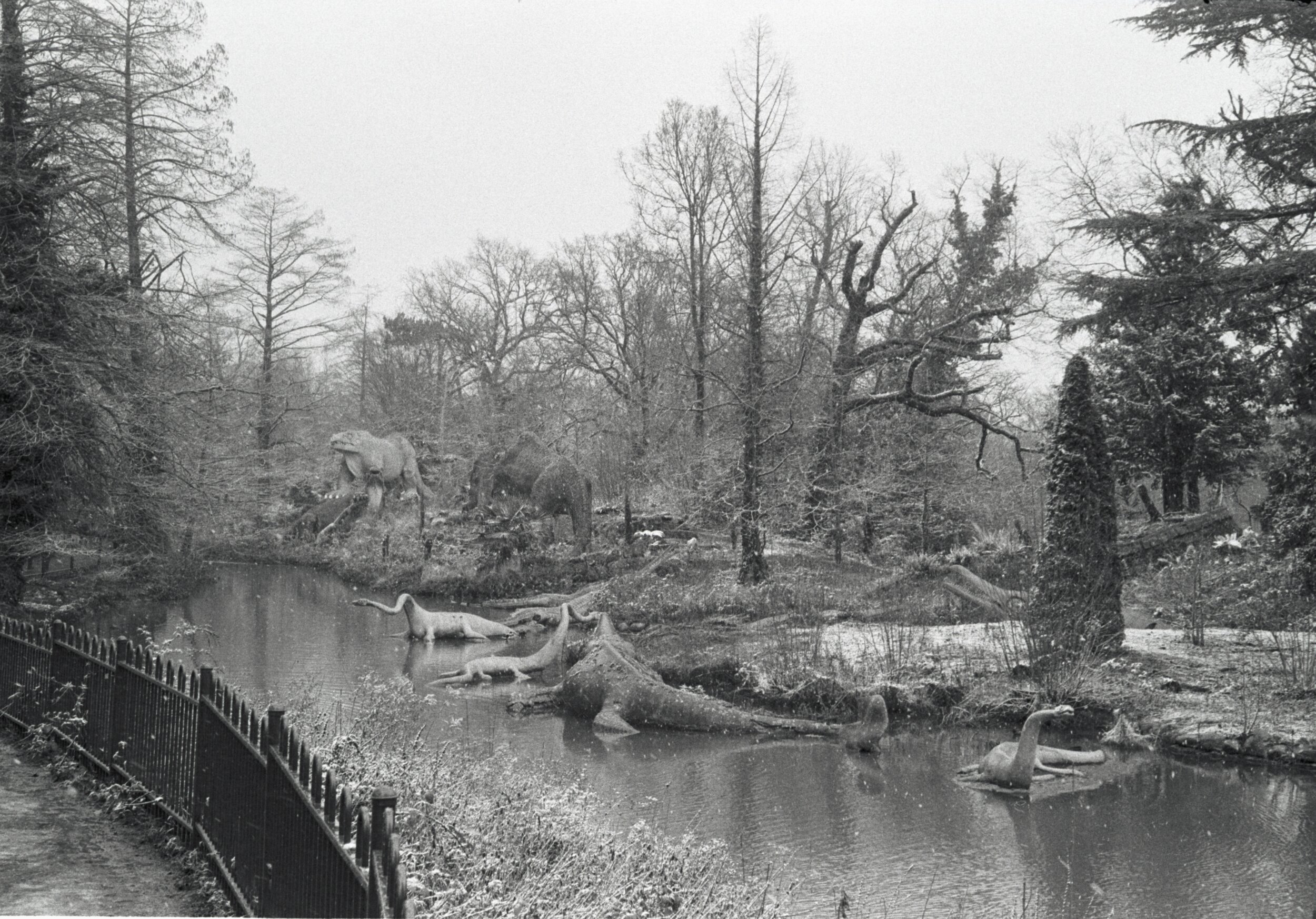
The Crystal Palace Dinosaurs
Take a walk on the wild side in South London
In South London is one of my all-time favourite historical sights. I remember reading about the Crystal Palace dinosaurs as a child and being incredibly miffed that we didn’t live in London so it was difficult to see them. I was absolutely obsessed with dinosaurs at the time (somewhat remarkably my parents took me and my friends to see Jurassic Park at the cinema for my eighth birthday – an interesting parenting decision given how terrifying it is in places). As a child there was something enticing about the pictures of these very odd statues surrounded by very formal Victorians with Top Hats.
In the flesh (so to speak), I am pleased to say that the sculptures more than live up to expectations. The first time I saw them on a hot day last summer, I was gobsmacked (they look equally brilliant in the snow I can confirm).
So what are they? In short, the first attempt ever to build accurate sculptures of dinosaurs. They were unveiled in 1854 to coincide with the moving of the Crystal Palace from its Great Exhibition location in Hyde Park to the top of Sydenham Hill. Designed under the influence of Sir Richard Owen (one of Darwin’s greatest rivals/critics) the models curiously reflect Owen’s invention and use of the word “Dinosauria” (meaning “Terrible Reptile”).
Iguanodons
Many of the creatures look like an odd version of the animals we are now so familiar with. It’s almost like looking at a creature that you know but squinting and getting something entirely different. Of course, the word dinosaur itself is a terrible description of the creatures – they were not reptiles at all, but the naming convention reflects the Victorian’s attempting to categorise something that was quite different from everything they knew.
My favourite sculpture is the Iguanodon – looking at the sculpture it becomes immediately obvious why it is so called. The huge statue looks like a giant Iguana, rather than the two-legged animal we now know it was. Interestingly (and perhaps not hugely surprisingly) the Victorians felt that the spiked appendage that was found with the skeletons of the dinosaur must have been a horn (we now believe it was a thumb – which actually sounds far more unlikely).
The Mosasaurus
Other highlights are the Megalosaurus (which is so large that a banquet was held in its body for key supporters of the project before it was completed). In the park, it walks on four legs and looks very little like the T-Rex-esque creature we know it was. Perhaps more important than even this is the Mosasaurus which (as my son will tell you immediately – he is four but a self-appointed palaeontologist) is not a dinosaur at all but a pre-historic marine reptile. So little did the Victorians know about this creature (having found only its skull), that they stuck it largely in the lake with just its jaws sticking out ready to attack any unwary passers-by.
The dinosaurs faced many years of neglect but are now very well looked after by the Friends of Crystal Palace Dinosaurs (have a look at the incredible work they are doing to stabilise the Megalosaur’s Head). The sculptures’ Grade 1 status now properly reflects the importance of this historical juncture at which science began to analyse and consider pre-history. Equally important in my view is the fact that they are just so, so cool and have given hundreds of thousands of children hours of joy over the 170 years they have been in existence.

